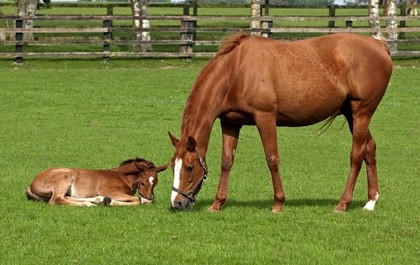
Effect of mare obesity and endocrine system on foal weight
In recent years the birthweight of Thoroughbred foals has increased. It is yet not known if this is associated with increased broodmare obesity or endocrine dysfunction. Even though information on the impact of increased foal size on equine health is limited, it has been associated with an increased incidence of orthopaedic disease.
It has been shown that in other mammalian species maternal obesity leads to increased fetal size. However, the effects of maternal obesity in equines are not fully understood. Hyperinsulinaemia and decreased insulin sensitivity have been identified in pregnant mares and metabolic dysregulation including hyperinsulinaemia, hyperleptinaemia and hypertriglyceridaemia has been associated with obesity in horses. However, the combined effect of gestation and obesity on equine maternal endocrine function and fetal size is yet unknown.
This study uses a total of 66 TB mares and aims to show insulin, leptin and triglyceride concentrations throughout gestation, and to look at the connection of maternal obesity and foal birthweight. Body condition score (BCS), weight and blood samples were obtained every 60 days throughout gestation.
In this particular population of TB mares, 55% were obese, but the incidence of hyperinsulinaemia was low. Maternal insulin concentrations decreased over the course of gestation, whilst leptin concentrations peaked in mid-gestation and triglyceride levels increased towards late gestation. Mare BCS correlated with foal birthweight such that obese mares had heavier foals. Increased leptin concentration in early and late gestation was associated with decreased foal birthweight.
> From: Smith, Equine Vet J. 49 (2017) 461-466. All rights reserved to EVJ Ltd.. Click here for the online summary.


